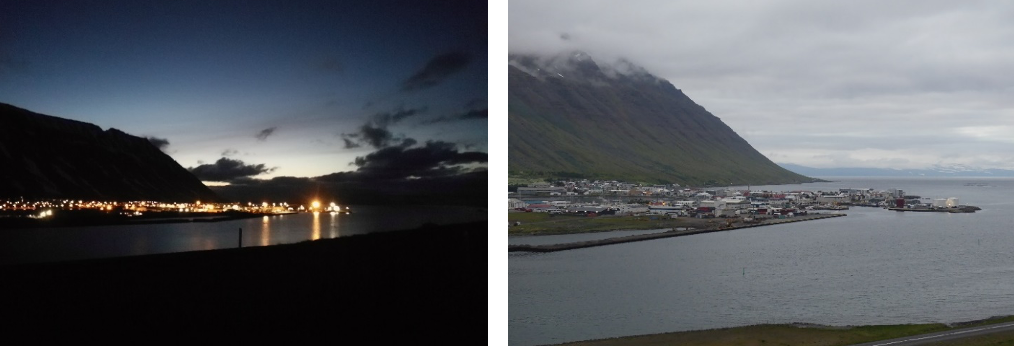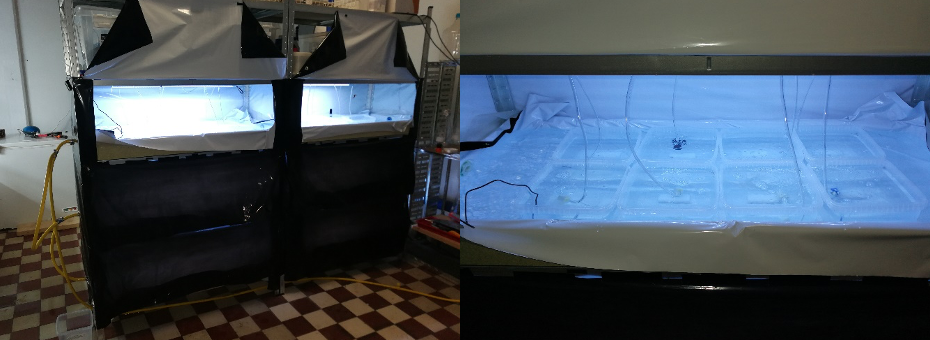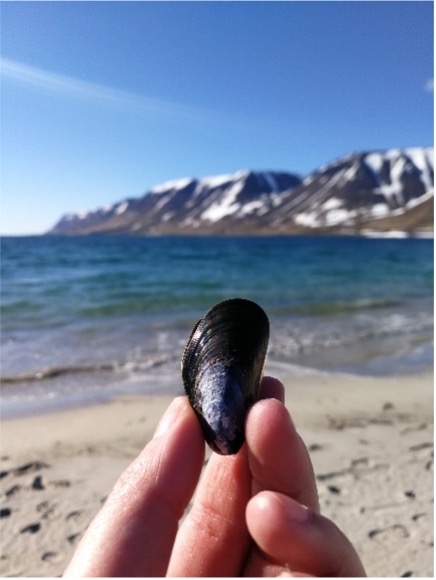
Sæl og blessuð! Velkomin tíl Ísafjarða.
Happy and blessed! Welcome to Ísafjörður.
That’s the formal greeting you hear in Iceland, the land of fire and ice. GAME is more than happy to finally cooperate with the partner institution in the Westfjords, incorporating a sub-arctic environment into the Global Approach by Modular Experiments. And what an addition it is! The rural town of Ísafjörður with its approximately 2,800 citizens, is the capital of the Westfjords. Located on a sandspit protruding into the fjord called Skútulsfjörður this historic town prides itself with an incredible history centered around fishing back to the very beginnings of Iceland’s pioneers.
After 5 years of waiting, the University Center of the Westfjords (UW), under the management of Dr. Peter Weiss, is finally ready to join the board of partner institutions of the GAME programme. The UW was established in 2005 and it is the only University in the Westfjords. It currently offers two Master programs: “Coastal and Marine Management”, and “Coastal Communities and Regional Development”. Since its beginnings, the Center has steadily grown and currently welcomes 40 students from all over the world to the Westfjords per year.
Being located at a latitude of approximately 66° north, Ísafjörður is the northernmost location participating in GAME. The consequences of this are some very interesting and novel considerations for GAME projects in general and especially for the current project on light pollution in which we want to assess the influence of artificial light at night (ALAN) on marine benthic filter-feeders. However, during the summer months in Iceland ALAN is not the only light that is available at night – from the 16th of June the sun does not set for approximately two weeks. But even before and after that period, the natural light, which is available during night, is substantial and this may influence the way that ALAN affects marine species and communities. Hence, different from other GAME teams in this project (with the exception of Team Finland), we in Iceland must account for this natural light availability during night. It could mean that the benthic organisms and maybe also the benthic communities here respond differently to ALAN than communities at lower latitudes. A fact that makes Iceland a very special addition to the partner locations.

We are the #Team_Iceland, consisting of Melanie and Jannis. Melanie studies Evolution and Ecology at the University of Tuebingen and arrived in Ísafjörður mid-April under the expectation of having to complete the experiments on her own, since there was no Icelandic team partner found in time. However, about four weeks later, Melanie was joined by Jannis who was supposed to travel to Malaysia to join Lim Song, but had to change his travel plans due to visa complications. Jannis studies Biological Oceanography at the University of Kiel and arrived in Ísafjörður mid-May.
Both of us had not heard about the town of Ísafjörður or about the Westfjords before. All you read and hear about traveling to and in Iceland is about the “Ring Road”, also known as the “Golden Circle”, which the Westfjords are not part of. When you look at the map of Iceland, the Westfjords seem to be almost separated from “mainland Iceland”, especially when you look at a road and public transportation map. And when you find your way to the Westfjords nonetheless it really feels like this part of land is a separate country. Melanie arrived in Ísafjörður on the 20th of April, Jannis approximately one month later, on the 21st of May. Throughout our first days, the main task was to meet as many people in and around the University Center as possible. Because that is the most important step in a small community like this. This allowed us to build a network of people who were willing to help us with the project or specific problems that we encountered. And there were plenty of those… As it is the first year that Iceland participates in GAME, we knew we had to start with very basic tasks to set the steppingstone for future GAME participants and projects.
The University Center did not previously have a lab or comparable facilities. However, they started to rent lab spaces in the newly opened and still developing wet lab owned by Gunnar Ólafsson with his innovation company “Djúpið”. And without Gunnar’s and Peter’s help, we would not have been able to get to the current point of the project. With the help of further parties, like the company BioPol in Skagaströnd, the high school and FabLab in Ísafjörður and many others, we managed to borrow, rent or simply 3D-print the necessary equipment for the project including a microscope, lab equipment for the microalgae culture, mussel tanks and so on. However, this whole process of getting the equipment as well as building the actual setup for the light experiments took much longer than initially anticipated, especially since it was only a one-person team for the first four weeks.
Just now, three months after the arrival of the first team member, we have started with the first pilot study but not with the main experiment. Nevertheless, we are very proud of our progress. We basically build a wet lab ourselves. It has a functioning indirect cooling system for the mussel tanks and a running microalgae culture. Not only that, but we did it even without any experts on the matter at hand. We had to saw, we had to drill, we had to hammer – a project like this requires more than just scientific work, sometimes you have to be many professions in one. And after we now have finally climbed this enormous mountain, we are more hopeful to get started with the main experiments soon and confident that we will yield valuable results for the bigger picture of the effects of light pollution on marine benthic filter-feeders.

As a little scientific and daily life survival guide to the Westfjords in Iceland, we want to share some of the things we learned during our project with you. The most important thing is to always plan with some time buffer and expect that not everything will be as expected. In many cases things are, like it is often said, shaped by the nature around and as the mountains stay straight and do only change slowly over time, also normal life in Iceland is often going in its own velocity without hurry or stress. Things need as long as they need, but in the end, they will work out somehow. So, slowing down and getting rid of the German willingness to get everything done as fast as possible was one of the first lessons we had to internalize. Living in a remote place like Ísafjörður does not mean that things are not available at all. It only means that they will not always be in stock in the quantity or at the time you need it.
Hence, the second thing we learned was how important improvising can be. The parts needed are not available in the shop anymore and nobody can say when the next delivery will take place – well, let’s think about another way to get things arranged. This does not only account for working at the project, but also for daily life. Often timing and luck are determining what is available at the grocery store. If a delivery with new food arrived on the same day everything is available. But sometimes the boards look quite empty, and you need to find other ways to get your food. Then it only helps to be flexible. No pasta available? Take rice. No bread available? Maybe let’s eat porridge in the morning and so on. The third thing to mention is always double check prices. I think it’s no secret, that Iceland is expensive. Nevertheless, there are possibilities to get things relatively cheap. For example, try local products and markets, they may have strange sounding names, but they are as good or better than what you were looking for. Besides that, buying things locally is also much faster than waiting until the delivery will arrive, it helps you to avoid the immense transport fees and of course it is better for the planet too.
And finally, always expect the unexpected. This is essential when, like in our case, nearly no infrastructure for the lab was available when arriving. We basically got an empty room, which we equipped with all things necessary over time. This means a lot of planning and organization, but even then, not always do theory and the real-world match. To solve this, the three upper points mentioned were very important: Check what is available and what needs to be ordered. Where can you get the things as cheap as possible? Is there another way to solve the problem? Lastly, if you feel like your head is fuming and everything is stuck, you can always step out of the door, take a breath of the cool, fresh sea air, walk into the mountains and get your mind settled by looking at their firm, natural beauty, which is even increasing now in summer when the slopes are getting greener, and yellow, white, red, purple and blue masses of flowers come into bloom, giving the area an appearance like dressed up for a feast. This is the big advantage of living in a rural area. Nature is always close by, a fact, that helps to get on the rebound if things appear to be deadlocked again, starting with a fresh mind and new ideas afterwards.

So, our conclusions so far are as follows:
Melanie: “I truly feel honoured to be part of this community and may it just be temporarily. Because GAME is more than just about the research – it’s about the experiences as well, about connecting with scientists and institutions abroad, it’s about learning of new perspectives, and finally, about growing personally. And I am more than able to say that I can tick each and every one of those points, already. As cheesy as it sounds but I did not only meet people, but I made friends. And that’s worth all the troubles on the way. Although, we are not finished yet, I am now more positive about the remaining two and a half months of our stay and about the success of our project. We hope to be able to collect the mussels soon to finally start with the pilot studies. Long days and sleepless nights are ahead but I know that it will all be worth it at the end.”
Jannis: “Science, that often appears to be a never-ending row of ship cruises, field trips and lab experiments, producing masses of data to be published in the end, increasing our understanding of the world. However, that scientific work is much more than that becomes now really clear for me. Organisation, cooperation, networking and of course creativity are the basis for each project now and in future. In this way, every experiment offers a great opportunity to not only gain knowledge, but also grow personally, by learning new skills you would not have been expected to need in the beginning. I’m sure that independent from the results of this work, this project already changed my way of doing things and taught me a lot of competences I will be happy to have later too. In the end this is one major point GAME stands for: It’s not only the pure scientific work that matters, also the surrounding things overall are important. Growing in and with your work is the best thing that can happen.”
